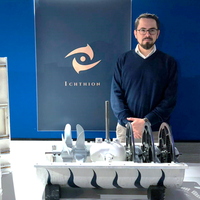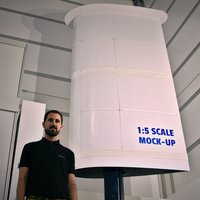Energy & sustainability
Jingshan Luo
Using solar energy to convert water and carbon dioxide into fuels and chemicals with high efficiency and low cost

Latin America
Inty Grønneberg
Plastic pollution has a new enemy: turbines capable of collecting up to 80 tons of plastic a day in rivers

Europe
David Ferrer-Desclaux
His system of autonomous sails inspired by aeroplanes reduces pollution and fuel consumption in maritime transport

Global
Huanping Zhou
Her innovations could make better, cheaper alternatives to silicon solar cells.

Global
Elizabeth Nyeko
Her energy solution for rural communities in Africa could make grids more efficient everywhere.
